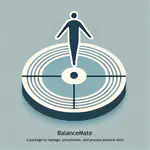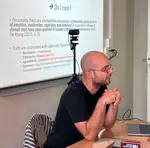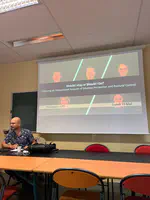The Effect of Emotion Perception on Postural Control
 source: https://www.craiyon.com/
source: https://www.craiyon.com/
In collaboration with Pr. Besche-Richard (Université de Reims), Dr. Chaby (Sorbonne Université, Université Paris Cité) and Pr. Vergilino-Perez (Université Paris Cité), the research project aims to understand how the perception of emotion facial expression can influence postural control. To the extent that emotions serve social functions (e.g., by communicating affiliation or aggressive behaviors), their recognition might foster approach/avoidant responses from the perceiver. Such adaptive behaviors aiming to reduce or increase one’s distance to another person might be detectable at the postural level using force platform: a tool assessing body sway by measuring the movement of one’s center of mass.
However, because reactions to emotion perception are multi-determined (e.g., one’s reaction to an angry person might be freezing, aggression, or flight - depending on both contextual and individual factors), it is necessary to nuance predictions by taking into account personality variables that might moderate one’s reaction to emotion facial expressions.
The research project is particularly focused around a clinical vulnerability to schizophrenia: schizotypy, a complex non-clinical personality trait. Understanding schizotypy is especially interesting to the extent that it allows the investigation of aspects relating to schizophrenia without being burdened with some usual limitations associated to clinical research (i.e., confounders and scarcity of the sample). However, schizotypy is often considered as a milder non-clinical form of schizophrenia. As such, understanding how schizotypical individuals react to facial expressions of emotions in terms of postural control might inform the processing of complex social information in clinical population.
To sum up, the research project will articulate elements from the clinical, cognitive, and personality fields of psychology to gain a better understanding in the processing of other’s emotional states and how this processing will foster approach/avoidance by relying on precise posturographic measures.
Please check out this package to help with data managing when using forceplates.
It also comes with some documentation! I would be really happy to receive any feedback on this work as this is my first package.
As of today, a meta-analysis on postural studies using forceplates is accepted for publication Psychophysiology. An other manuscript reporting the postural study with the largest sample size to our knowledge was submitted and is currently considered for publication in Emotion (Fingers crossed).



